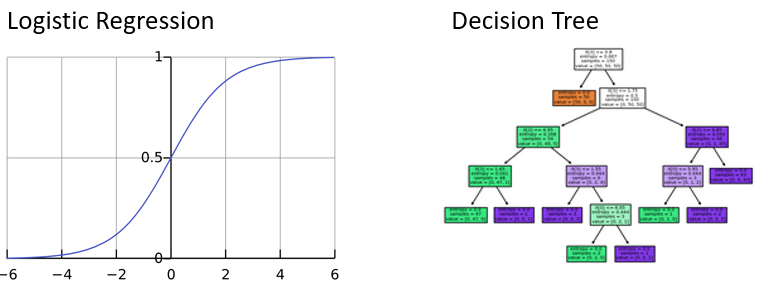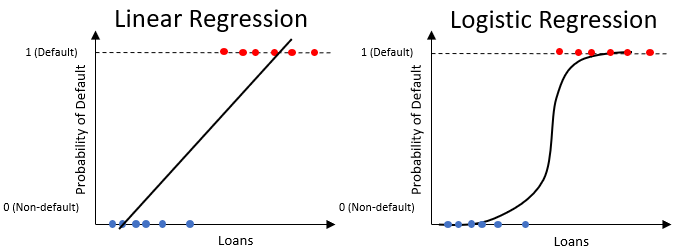Logistic regression for probability of default
Credit Risk Modeling in Python

Michael Crabtree
Data Scientist, Ford Motor Company
Probability of default
- The likelihood that someone will default on a loan is the probability of default
- A probability value between 0 and 1 like
0.86 loan_statusof1is a default or0for non-default
Probability of default
- The likelihood that someone will default on a loan is the probability of default
- A probability value between 0 and 1 like
0.86 loan_statusof1is a default or0for non-default
| Probability of Default | Interpretation | Predicted loan status |
|---|---|---|
| 0.4 | Unlikely to default | 0 |
| 0.90 | Very likely to default | 1 |
| 0.1 | Very unlikely to default | 0 |
Predicting probabilities
- Probabilities of default as an outcome from machine learning
- Learn from data in columns (features)
- Classification models (default, non-default)
- Two most common models:
- Logistic regression
- Decision tree
Logistic regression
- Similar to the linear regression, but only produces values between
0and1
Training a logistic regression
- Logistic regression available within the scikit-learn package
from sklearn.linear_model import LogisticRegression
- Called as a function with or without parameters
clf_logistic = LogisticRegression(solver='lbfgs')
- Uses the method
.fit()to train
clf_logistic.fit(training_columns, np.ravel(training_labels))
- Training Columns: all of the columns in our data except
loan_status - Labels:
loan_status(0,1)
Training and testing
- Entire data set is usually split into two parts
Training and testing
- Entire data set is usually split into two parts
| Data Subset | Usage | Portion |
|---|---|---|
| Train | Learn from the data to generate predictions | 60% |
| Test | Test learning on new unseen data | 40% |
Creating the training and test sets
- Separate the data into training columns and labels
X = cr_loan.drop('loan_status', axis = 1)
y = cr_loan[['loan_status']]
- Use
train_test_split()function already within sci-kit learn
X_train, X_test, y_train, y_test = train_test_split(X, y, test_size=.4, random_state=123)
test_size: percentage of data for test setrandom_state: a random seed value for reproducibility
Let's practice!
Credit Risk Modeling in Python




